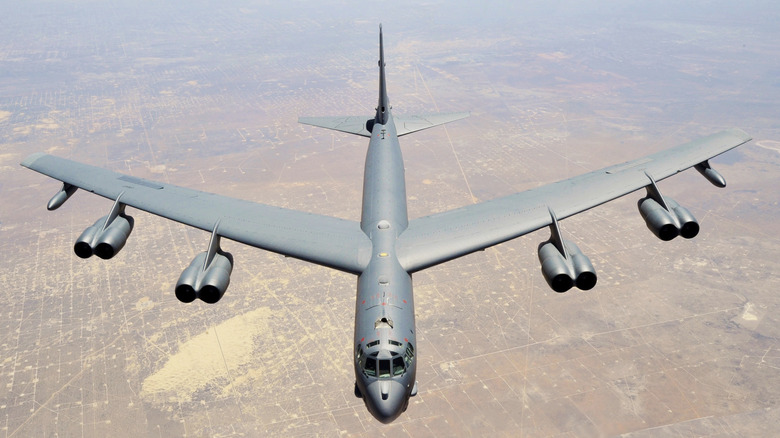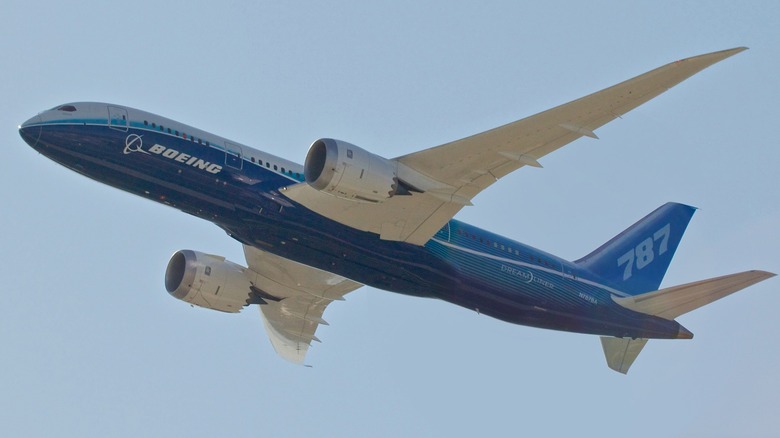
The Boeing B-52 has been in service for over 60 years, and the BUFF, or Big Ugly Fat Fellow (or similar) has had its share of aging problems and unusual characteristics. The change from its original mission as a high-altitude bomber in the 1950s to low-level bombing as anti-aircraft missile technology improved was punishing for fuselages. Other changes such as changing to a wet wing (meaning that the wing carried fuel in it) put further stress on the skin of the airplane. In the 1970s, the Pacer
Plank program replaced much of the B-52's covering. With all this stress on the airframe, keeping an eye on the skin of the B-52 for cracks is vital.
It might be a surprise, then to see 'wrinkles' on the skin of the B-52. The aircraft is actually designed for the skin to be able to move about and flex in flight. Still, wrinkles on an aircraft's skin can be a sign of abnormal stresses, which could lead ICAO to issue warnings and downtime due to fleet checks. So, maintenance crews keep a careful eye on the wrinkles.
Read more: 10 Of The Strangest Military Helicopters Ever Made
How The Wrinkles On A B-52 Form

The B-52's skin is made from aluminum to make it as light as possible. According to USAF manuals, the forces acting on a B-52 in flight may cause the skin to wrinkle or even buckle. These forces only increased with the extra buffeting due to flying through the thicker, more turbulent atmosphere nearer the ground to avoid radar detection and SAM launches until it was too late for the defenders to act.
On the other hand, there could be other reasons for wrinkling. Wing warping damage could include parallel wrinkles which should be examined immediately. The Air Force draws attention to the fact that stresses in flight can even work rivets loose. Overheating is also known to cause the skin of a B-52 to buckle.
The B-52 Isn't The Only Wrinkly Aircraft

Other aircraft and other flight parameters are known for wrinkles. Early F-15s flown at high Mach numbers could end up with wrinkles near the air inlet ducts due to the heat generated at those spots at high speed. Also, parts of the wing assembly on the F-15 A/B could wrinkle due to high-g maneuvers. Unusually hard landings can affect aircraft, too, and in 2023 a Boeing 767 suffered from fuselage wrinkles after a landing that had the nose wheel bounce three times at up to 1.6g.
The most recently designed aircraft use different materials and construction techniques. However, issues with the skin of the aircraft are still around, even if the wrinkles have been smoothed out. For example, production of the Boeing 787 was halted for a short while in 2021 due to faulty connections between skin panels that resulted in cracks between fuselage sections that are the thickness of a human hair.
Want the latest in tech and auto trends? Subscribe to our free newsletter for the latest headlines, expert guides, and how-to tips, one email at a time.
Read the original article on SlashGear.












